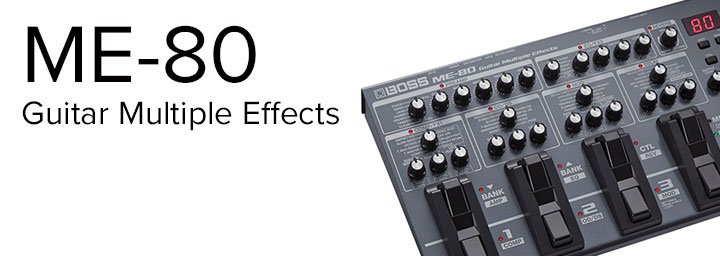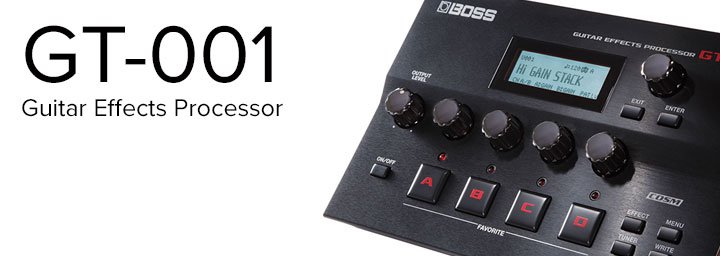If you Google a very specific search term like ‘Another Brick in the Wall Part II guitar tone’ you still get more than 16 million entries! There are some strange and crazy theories out there, but fortunately for us Dave Gilmour has done some video interviews describing the sound behind one of the most iconic guitar solos of all time.
On the original recording, he played a Les Paul Gold Top (with P-90 pickups) direct into the mixing desk and then gated and compressed the signal, before running it back out again and into a Mesa Boogie Mark I Amplifier which was mic’d up and recorded…phew.. take a breath!
Since I used the BOSS ME-80 on my Classic Patches Medley video, I’m going to go through how I would create this tone on it, but essentially the process would be same on any of the BOSS multi effects units.
Contributed by Josh Munday – Tone Designer
In an earlier blog article, I spoke about the best way to approach a tone is to consider the 4 Elements of Guitar Tone and using those principles, we have:
1. The Guitar
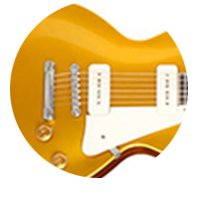 For the solos on Another Brick in the Wall Part II, Dave Gilmour used a Gibson Les Paul Goldtop with P90 soapbar pickups. The original P-90’s predated the humbucker and, being big single coils pickups, had more top end in their sound.
For the solos on Another Brick in the Wall Part II, Dave Gilmour used a Gibson Les Paul Goldtop with P90 soapbar pickups. The original P-90’s predated the humbucker and, being big single coils pickups, had more top end in their sound.
To recreate the ‘Another Brick in the Wall – Part II’ guitar tone, I use a Fender G-5. You will need to make slight adjustments in your final settings depending what guitar you are using.
2. The Pickup Selection
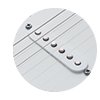 This is a neck pickup type of tone, you can tell by how ‘mellow’ and ‘hollow’ it sounds. So select the neck pickup.
This is a neck pickup type of tone, you can tell by how ‘mellow’ and ‘hollow’ it sounds. So select the neck pickup.
If you don’t own a guitar with a singe-coil pickup in the neck position, use the closest approximation on your guitar. e.g. On a 2-humbucker guitar like a Les Paul, just select the neck pickup, you can compensate for the tonal differences later in the EQ, Compressor and FX sections.
3. The Amp
 Always start with everything off – I can’t stress this enough! Find the OFF button for everything in the signal chain so all you can hear is your dry guitar sound coming through.
Always start with everything off – I can’t stress this enough! Find the OFF button for everything in the signal chain so all you can hear is your dry guitar sound coming through.
Remember any multi-FX / amp simulator like the BOSS ME-80 is simulating a room full of gear, so think about it like that – you wouldn’t walk into a room full of amps and FX and start by turning everything ON would you? You would plug into an amp, get a good basic tone, then turn on any effects one at a time and build up your sound…. likewise with any multi-FX.
Since we are going for something close to an early Mesa Boogie Mark I Amplifier that had a very smooth sounding gain character, so we will use the BOSS ME-80’s ‘LEAD’ Amp setting.
Set the EQ “flat” (i.e. all settings at the half way point or 12 o’clock). This gives you a neutral starting point so that the EQ isn’t colouring the tone. For this particular tone we can leave the EQ at these settings.
Set the gain stage at about a quarter of a turn (9 o’clock).
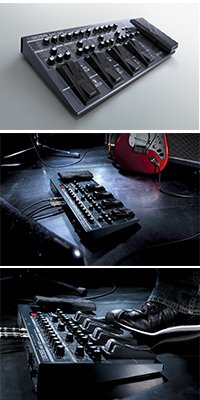 By now you should have a good idea of what the plain amp tone sounds like with a mild amount of gain, so you can also hear the gain stage character.
By now you should have a good idea of what the plain amp tone sounds like with a mild amount of gain, so you can also hear the gain stage character.
You’ll notice that while there isn’t a great deal of gain running on the amplifier, there is a LOT of sustain on the recording, which we cover in the effects.
4. The Effects
You will need to use effects to modify the pickup tone to allow for your guitar tone. I’ve used a Fender G-5 Stratocaster with a single coil in the neck, so it is already quite similar to the front P-90 pickup in a Les Paul Gold Top. If you are using a humbucker in the neck it may still sound very close because the compression that we’ll add shortly changes the attack of the guitar tone.
In order to get the sustain that’s in the recording we need to run a large amount of compression. Use the COMP setting and turn the SUSTAIN up to 65, the ATTACK up to 75 and the LEVEL at 50. This should give you the sustain even with low gain, so we can keep that nice smooth overdrive.
There’s also a large amount of Reverb on this sound too so I’ve selected a HALL Reverb and turned it up to about 35.
There you have it guys that is how I got the Pink Floyd’s ‘Another Brick in the Wall, Part II’ guitar tone.
Download the ‘Another Brick in the Wall – Part II’ patch for BOSS GT-100 HERE
Download the ‘Another Brick in the Wall – Part II’ patch for ME-80 HERE
Download the ‘Another Brick in the Wall – Part II’ patch for GT-001 HERE
Related Articles
Who is Joshua Munday?
4 Elements of Guitar Tone
BOSS ME-80 Classic Patches Medley
Brian May’s ‘Killer Queen’ Guitar Tone Dissected
Another Brick In The Wall – Part II’ (Pink Floyd) Guitar Tone Dissected
‘Panama’ (Van Halen) Guitar Tone Dissected
‘Hotel California’ (The Eagles) Guitar Tone Dissected
Bad to the Bone’ (George Thorogood) Guitar Tone Dissected
‘Crazy Train’ (Ozzy Osbourne) Guitar Tone Dissected
‘Killing In The Name’ (Rage Against The Machine) Guitar Tone Dissected
Thanks to Mark Smith for his assistance in writing this article.

